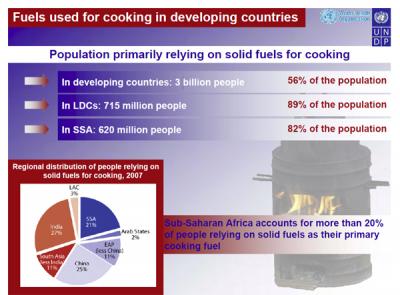Una reciente evaluación realizada por los refugiados de la Mujer de la Comisión en Haití constató que el precio del carbón ha aumentado en un 40% (CMR y el PMA 2010). Cómo ayudar a las poblaciones sujetas a desarrollar la capacidad de producción de biocombustibles líquidos puede ofrecer una importante solución a la pobreza energética en las comunidades desplazadas de Haití y contribuir a su desarrollo a largo plazo de la autosuficiencia energética.
Proyecto Gaia ha estado trabajando en Haití para promover el etanol y la Estufa CleanCook - una estufa a base de alcohol - como alternativa a las estufas que queman biomasa sólida (es decir, madera, carbón vegetal y briquetas.) El etanol es tan limpia como gas licuado de petróleo, más barata que el carbón, más seguro que el queroseno y tiene más potencial que las briquetas de basura. En África, el Proyecto Gaia ha acumulado más de 2 millones de días de cocinar con la estufa CleanCook sin un solo accidente de cierta importancia.
La pregunta más común que aparezcan durante nuestras conversaciones con los responsables políticos y los empresarios sociales es: ** "¿El suministro de etanol, sea sostenible? Y ¿dónde estaría la oferta provienen de donaciones después tocaban a su fin? "**
Esta es la pregunta clave de la sostenibilidad y la razón de por qué estamos tan interesados en Haití. No sólo fue Haití una vez al líder productor de azúcar y una destilería de etanol de bebidas para la exportación, así como el mercado local, pero también Haití existe en las rutas comerciales durante el cual miles de millones de litros de etanol cada año el flujo de camino a un mercado de combustibles en el los Estados Unidos. Este etanol, sobre todo de Brasil, generalmente el precio más competitivo en el mercado de materias primas, proporcionará una fuente de combustible para Haití-más barato que el petróleo-como Haití acumula su propia producción local (Etiopía Petróleo de datos empresariales). De hecho, el Gobierno brasileño se ha comprometido a donar más de 100.000 litros y un litros otros 400.000 en los próximos dos años.

